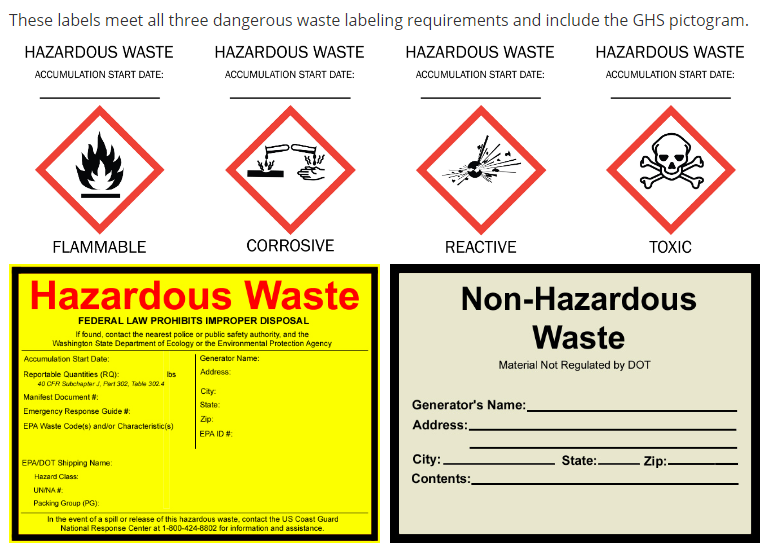
If your facility generates dangerous waste, you must label it properly. Labeling is one of the most common compliance violations, and the easiest to avoid. Good labeling will keep your employees safe and will help ensure your waste is disposed properly.

Labels on dangerous waste containers must clearly show:
Any label will work, as long as it clearly shows those three elements. If you reuse a container for dangerous waste, make sure to remove or destroy the previous label so it’s clear what’s currently in the container.
The Quick Guide to Dangerous Waste Labeling lists labeling requirements for common types of dangerous waste — all on one handy sheet.
Print free labels and attach them to your waste containers. Most labels don’t need to be in color. Covering the labels with clear plastic will make them last longer.
You aren’t required to use any specific label designs or hazard symbols under the dangerous waste regulations. Just make sure the three required pieces are there: dangerous waste, the risk, and the date.
U.S. Department of Transportation requires other labels for waste you ship off site. For a quick reference, see DOT Chart 15: Hazardous Materials Markings, Labeling and Placarding Guide.
Universal waste: Containers with universal waste (batteries, fluorescent bulbs and tubes, and mercury-containing equipment) must be labeled with the words “universal waste” and the specific type of waste.
Satellite accumulation area: Any containers in a satellite accumulation area must be labeled with the words “dangerous waste” or “hazardous waste” and the risk(s). Once a container has 55 gallons of dangerous waste (or 2.2 pounds of certain types of waste), you must label it with the accumulation date.